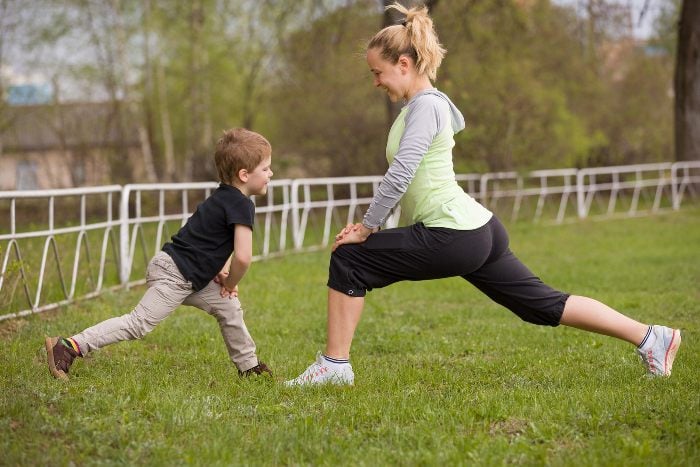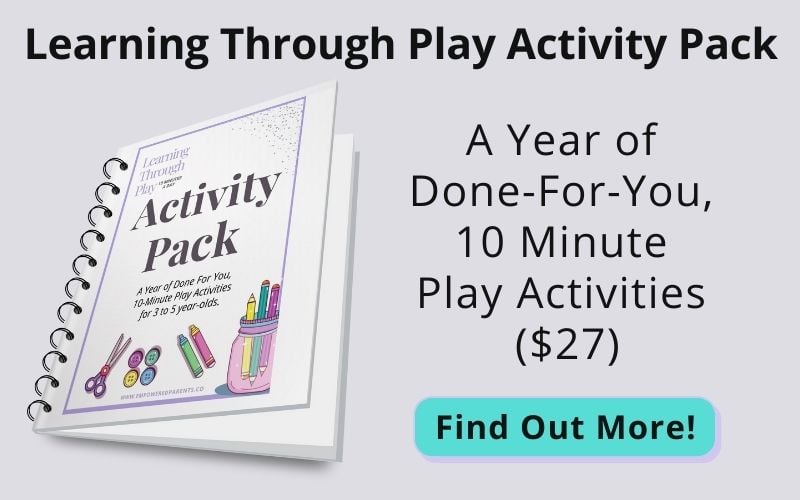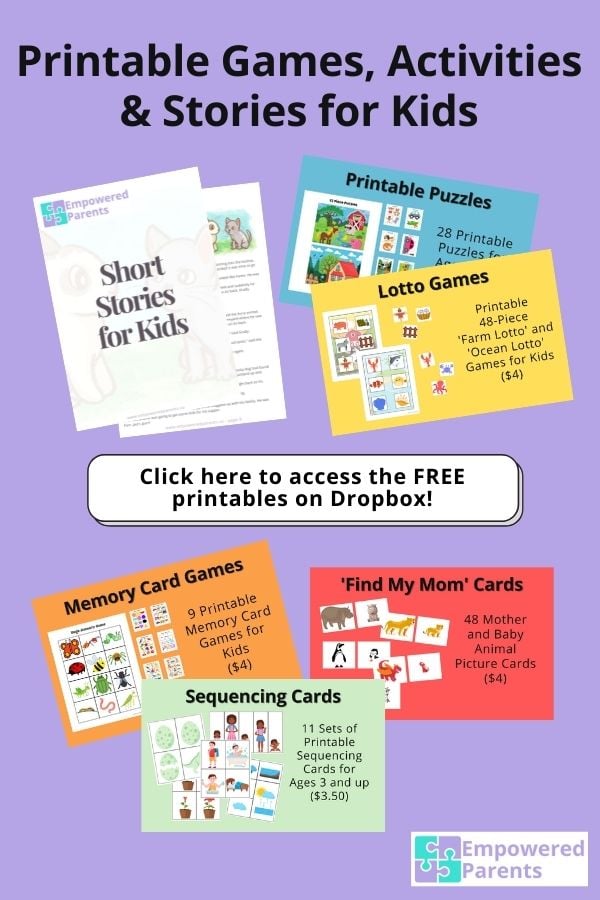Story for 3 Year Old Easy to Get Involve

Are you wondering how to improve the attention span of a child? One of the most important keys to success at school is having a well-developed concentration span.
In this article I'll share some simple activities to increase attention span.
Children who struggle to focus in class often miss out on many learning opportunities and don't keep up with their peers.
It can be difficult to fix a concentration problem in an older child. The best time to work on this skill is during the early preschool years when you as a parent or teacher can actively build their focus.
What is Attention Span?
Attention or concentration span is a child's ability to give undivided attention to the specific task at hand.
It requires blocking out all other stimuli – such as sound (the class next door making a noise), visuals (watching what's happening outside the window) or unnecessary information (old notes written on the board).
During a school day, children need to concentrate repeatedly on different tasks, in an environment that can be very overstimulating for some.
Monitor your child's concentration span during their preschool years and make sure it is increasing slowly with time. School will become extremely difficult and exhausting for a child who struggles to focus.
As with all other developmental skills, it is easier to build in the preschool years than later on in life.

What is the Average Attention Span of a Preschooler?
It is generally accepted that a child can concentrate for roughly 2 to 3 minutes per year of age, so:
- The attention span of a 3-year-old is approximately 6 to 9 minutes.
- The attention span of a 4-year-old is approximately 8 to 12 minutes.
- The attention span of a 5-year-old is approximately 10 to 15 minutes.
[source]
This means the average concentration span of a preschooler is usually less than 15 minutes. That is, 15 minutes purely focused on one task. For younger preschoolers, it is 5 minutes.
This is only a general guide and children differ in their development. Children may concentrate for longer (even much longer) if they are interested and engrossed in an activity.
If you are worried about your child's ability to focus, first ask yourself if you are expecting them to concentrate for a manageable block of time.
It is much more effective to work on short tasks and provide frequent breaks than to try and sit through an hour with a 4-year old.
A great way to refocus your child during an activity is with movement.
Activities to Increase Attention Span in Preschoolers
You can build your child's ability to focus in these simple ways.
Here are some activities to improve attention and concentration span in preschoolers.
Watch the video below for a list of the activities or read on for an explanation of each.
This post contains affiliate links for educational products that I personally recommend. If you purchase through one of them, I earn a commission at no extra cost to you. Read the terms and conditions for more details.
1. Focus Games
Play games with your child that require a lot of focused attention.

A child playing a board game, for example, has to remember whose turn it is, follow the count on the dice, remember the rules, and pay attention throughout.
Try one of these thinking games which will also encourage paying attention.
Games like Snakes and Ladders or Ludo are great for building concentration.
Need more games that improve attention span?
Try playing games such as Simon Says, I Spy with my Little Eye or the Odd One Out Game.
Listening games like Musical Statues and Broken Telephone will also build concentration.
Another great game for building concentration is a memory game – played with pairs of matching cards.
Get your own memory cards by downloading the FREE set of printables at the end of the post.
2. Activities With an End Result
With certain activities, such as drawing a picture, children can simply stop when they lose concentration or become bored.
However, give your child a puzzle and they will more than likely finish it since it will be incomplete if they don't.
Provide opportunities like this and your child will persevere longer than they normally would, which will lengthen their concentration span over time.
The best puzzles for young children are sturdy, wooden ones like these. Older preschoolers may be ready for 24-piece puzzles.
Try the fun printable puzzles in the set of activities at the end of the article!
Read more about the benefits of puzzles.
3. Movement Breaks
Not only does physical activity help develop children's concentration span in general, but it also helps reset and re-energize immediately.
The most effective way to provide a break during an activity is through a quick brain break or a movement activity.
Brain breaks can be as short as a minute. They will get the blood flowing and boost kids' concentration so they can continue on an activity for another few minutes.
Think about how you feel when you are sitting in front of your computer working for a few hours.
Just the simple act of getting up, making some coffee and walking around for 2 minutes can reset your body and make you feel fresh when you resume your work.
For children, not only do movement breaks help them to refresh and reset, but they are also an opportunity to develop gross motor skills such as core strength, coordination and balance, and even cognitive skills.
4. Concentration Exercises
Here are 18 quick exercises you should try to do often that will give kids a good stretch and refocus them on their tasks.
Sitting with your legs stretched out in front of you:
- Shake your knees and then your feet.
- Bend over and hold your toes.
- Stretch your toes forward.
- Stretch your toes back.
Stand and move your arms:
- Flap your arms up and down on your side, like a flying bird.
- Shrug your shoulders. Shrug one shoulder at a time, forwards and then backwards.
- Then shrug both shoulders together, forwards and then backwards.
- Swing your arms backwards and forwards.
- Rotate your arms to the side like a windmill. First make small rotations, then wider rotations. Start with one arm at a time, then both arms at the same time.

Walking exercises:
- Walk backwards using small steps, then large steps.
- Walk sideways, first to the right, then to the left.
- Pretend you are walking along a rope. Go in a straight line.
Balancing exercises:
- Stand on one leg. Count to 5, then swap and stand on the other leg.
- Stand on the tips of your toes. When you are balancing, close your eyes and stay on your tip-toes.
- Stand on the tips of your toes and walk around the room.
- Hop with feet together, then one foot at a time.
Lying down exercises:

- Pretend to be a ball: Hold your knees in tight. Pretend to be a ball and rock backwards, forwards and around.
- Seal slide: Lie flat on your tummy. Stretch your arms and legs by holding your feet. Then keep your legs bent and straighten your arms out to the side and lift your body off the ground. Walk the hands forward, dragging the legs.
- Flying plane: Lie flat on your tummy. Lift your arms and hold them in the air like an airplane. Then move your arms up and down.
5. Age-Appropriate Activities
Children will only develop their concentration span when doing activities that are age-appropriate. If you give your child a puzzle that is too advanced, he will give up early on and lose motivation.
If the activity is too advanced or too long, your child will not find it meaningful and will lose interest.
Giving academic or formal activities will have the opposite effect of what you may have intended.
The right length of time to expect a child to focus solely on one activity is roughly 2 to 3 minutes for each year of age.
If you provide short age-appropriate activities that are challenging but aren't impossible, your child will gradually start to spend a little more time as she matures.
6. Controlled Screen Time
Did you know that screen time actually shortens your child's attention span?

I once had a parent meeting where I had to inform a mom that her 4-year-old really struggled to pay attention in class. He could barely focus for a minute or two and was not able to follow any activity the class were doing.
His mom was shocked and told me he was able to concentrate for hours when watching TV.
There was the problem.
Watching TV is not concentrating. Children are not actively engaged. They are staring passively at a device.
When a child watches TV, the images on the screen are flashing at a rate that is unnatural to the brain. With repeated exposure, the brain becomes used to this stimulus.
When the child then tries to interact with his normal environment, he struggles to process information that is flashing at a natural rate.
Slightly scary.
Screen time is unavoidable in today's times but can definitely be managed sensibly.
7. Daily Routine
Keeping a daily routine helps kids get used to daily activities and will teach them about patterns.
When children know what's coming next, they are more inclined to want to get involved and do it.
If children know it is indoor playtime now, they will settle quickly and find an appropriate play activity.
You won't be fighting every day to drag them from the TV as their 20 minutes of TV will have its own time slot.
Routine also gives a sense of security.
This gives you the opportunity to schedule activities in a day that stimulate concentration.
8. Sleep and Nutrition
Having a healthy diet and sleeping a sufficient number of hours per night will have a massive impact on your child's ability to concentrate.
Make sure bedtime is part of that non-negotiable routine.
9. Reading to Children
Unlike watching TV, when you read to your child it requires real attention and listening.
Reading to children is one of the most beneficial learning experiences. It is a fun and simple way to build concentration span on a daily basis.
The more interested children are in the story, the more they will hang onto every word and pay attention.
Read about why bedtime stories are essential and then read your kids these four short bedtime stories.
To me, there is nothing better – or more educational – than a good Dr. Seuss or Julia Donaldson story. My kids can never get enough of them.
They are great for learning vocab and developing auditory awareness (through rhyming and repetition) and they are so entertaining, that your kids will be paying attention.
10. Regular Exercise
Exercise has been proven to develop a child's concentration. It helps with memory, attention, mental sharpness and lowering anxiety, and also increases a child's energy.

Make sure your children are active. The best way to do this is to encourage regular free play, especially outdoors.
11. Respecting How Your Child Learns
Children have different learning styles and they will concentrate and perform best when learning in their preferred style.
Visual learners prefer to see what they are learning, auditory learners prefer to hear what they are learning and kinesthetic learners need to touch and experience to learn.
The majority of young children prefer kinesthetic (hands-on learning) and will learn best through physical experience.
Pay attention to how your child best pays attention!
What if Your Child Has Concentration Problems?
ADHD, or Attention Deficit Hyperactivity Disorder, is characterized by impulsivity, overactivity or a lack of attentiveness. Some children display all three qualities.
If you feel your child struggles to concentrate, there could be multiple factors, such as anxiety, immaturity, anger, etc. One cannot just assume it is ADHD.
The best thing to do is to monitor your child and be aware of their ability to focus. If your 5-year-old is unable to focus on anything or jumps from one task to another every minute, seek advice from a professional.
ADHD can only be diagnosed by a professional, after which you can put the correct measures and support in place. Very often, there may be other underlying causes that can also be addressed with guidance.
Get instant access to FREE educational printables here. You'll receive puzzles, sequencing cards, 'find my mom' cards, memory games, lotto games and a pack of short stories.
Would you like a year of done-for-you, ten-minute activities to teach your 3-5-year-old through play? Get your copy of the Learning Through Play Activity Pack for only $27.

Source: https://empoweredparents.co/10-ways-to-develop-your-preschoolers-concentration-span/

0 Response to "Story for 3 Year Old Easy to Get Involve"
Post a Comment